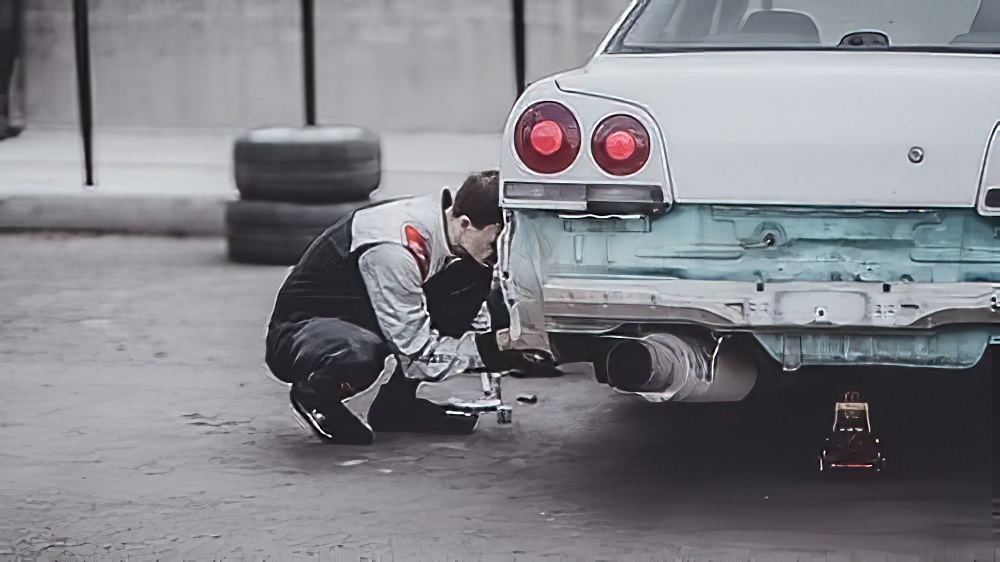Whether it’s new or used, your vehicle will not last forever. Most vehicles have a lifespan of around 15-20 years and this number is increasing as parts become more reliable and manufacturing methods more robust. However, to ensure that your vehicle reaches its golden years, it is important to know when parts need repair or when outright replacement is in order.
As more and more people are tightening their belts and watching how they spend it is easy to overlook minor issues, but this ultimately leads to bigger problems and higher maintenance bills if the condition of the car is left to deteriorate. On the other hand, some problems are so large that the cost of repairing them is more than buying a new vehicle. This usually happens when the problem has taken your car off-road entirely, leaving you without wheels until you find the cash to buy a new one. To avoid this, it is best to recognize the signs of an aging car in advance, so you can make the necessary arrangements for a new purchase before your old car dies completely.
Here are some signs that your care requires some serious TLC, and when replacement is the best option.
Your Engine Light Is On
An extraordinary number of drivers ignore their check engine light, which always ends in disaster. Often the problem is easily fixed, but because the issue was left to worsen, the engine deteriorates and more errors occur. Regularly check your engine using an OBD2 Scanner. OBD2 Scanners are an easy way to check your engine’s code for any faults and get ahead of the problem before it gets ahead of you.
Make sure to find the best OBD2 Scanner for your vehicle and engine. They are easy to use and help you understand what’s happening with your engine so you can decide if it is worth repairing, replacing, or time for a new car entirely.
You have Poor Gas Mileage
Older cars just don’t cut the mustard when it comes to gas mileage. As parts get older and become weakened or less efficient, gas mileage gets lower and lower and it costs you more and more money to get to where you need to be. However, before you put your old car out to pasture, there are several things you can do to improve gas mileage yourself.
Clear Out Your Car
It only takes 100 extra pounds to significantly affect your gas mileage. If you’re hauling around unnecessary items like roof racks and heavy-duty cargo boxes, then clear them out to make the load easier on your car.
Check Your Tire Pressure
Fuel consumption increases if your tires are flat. Under-pressurization also wears your tires out quicker, so make sure all four are inflated according to the owner’s manual recommendations. If you are constantly having to inflate your tires, then there is likely a slow leak somewhere, and they will need to be repaired or replaced.
Stay a Steady Course
The faster you go, the more fuel you use. Rapid acceleration and braking burn up more fuel and make your journey less efficient. If you adhere to all of the above and your gas consumption is still through the roof, then it may be time to call it quits on your old car. Although a new car may feel more expensive at the outset, you will likely spend much less on gas in a new car and save more money in the long term.
Your Safety Features Are Ineffective
Are you having to worry about getting to your destination in one piece? Are your seatbelts coming away at the steams? Does your windshield wiper keep flying off? Or did your brakes almost fail you that one time?
Sure, most of these issues are easily fixed for relatively cheap and should be tended to immediately. However, if you fix a minor issue and that same issue repeats itself within 6 months or gets worse, then that is an indication that there is a major fault on its way and replacement of a part or the entire car may be necessary. Repair is preferable to replacement if possible, but constant repairs are an indication that something is wrong and may burn a bigger hole in your pocket.
Purchase a Reliable Car To Begin With
Although the newest Porsche Macan would look great in your garage, you don’t necessarily need to splash out on the newest and most spectacular car to ensure that you purchase a healthy vehicle that will last. If purchasing a new vehicle second-hand is your only option, then make sure to use a reputable seller and only purchase a car with a full inspection and maintenance history.
If you are buying brand new then go for a car that matches your lifestyle and driving preferences. An SUV is more at risk of early wear and tear in the city than out in the country, and similarly, a Fiat 500 would be easily overwhelmed and will burn out quicker on rural terrain. Otherwise, make sure to keep on top of your healthy car with regular checks and servicing. Cars that are serviced yearly vastly outlive cars that are not. Cars that are serviced on time have a greater chance of lasting 200,000 miles. Even one missed oil change can prematurely age your engine. So make sure to stick to your car servicing schedule to increase the chances of your car reaching that 20-year mark in one piece.



















